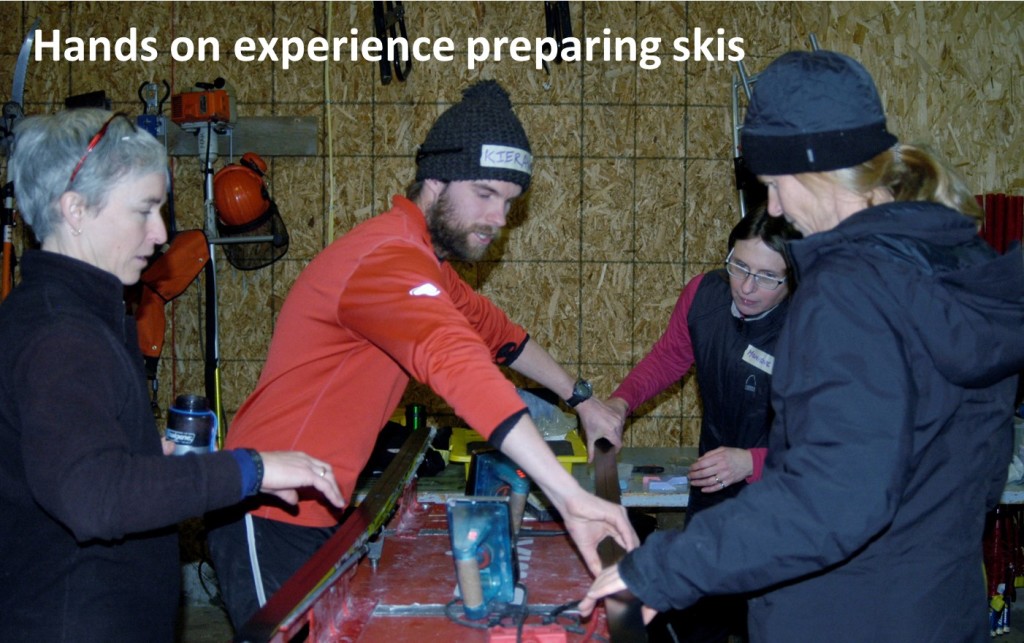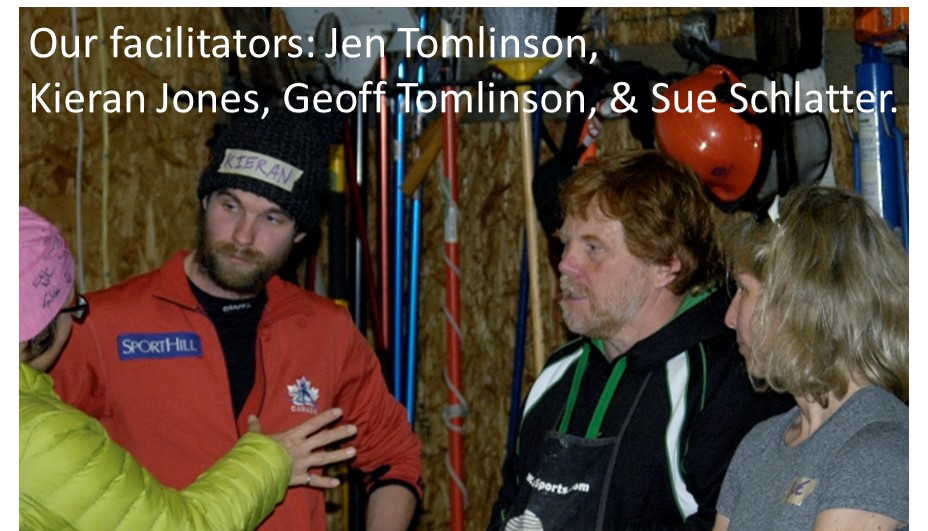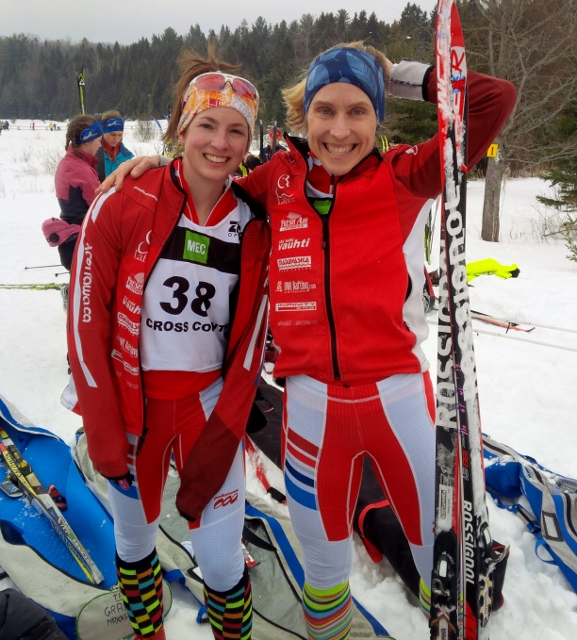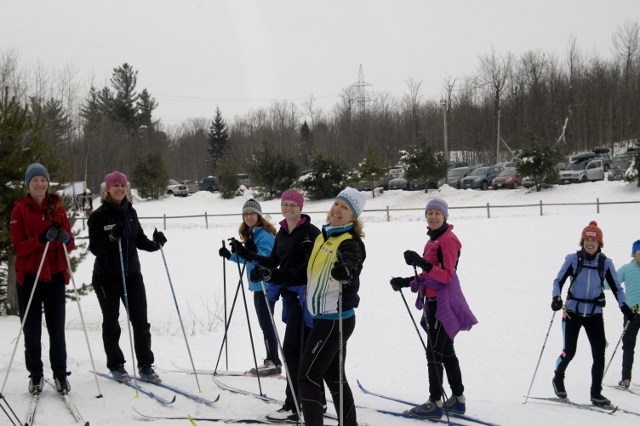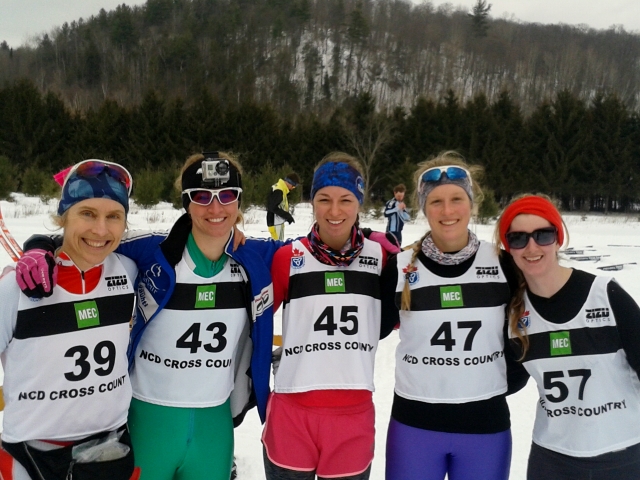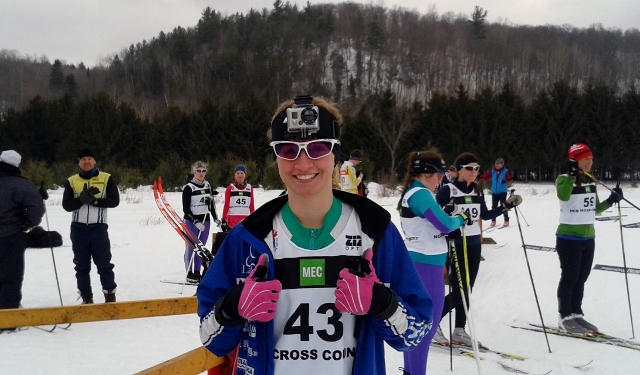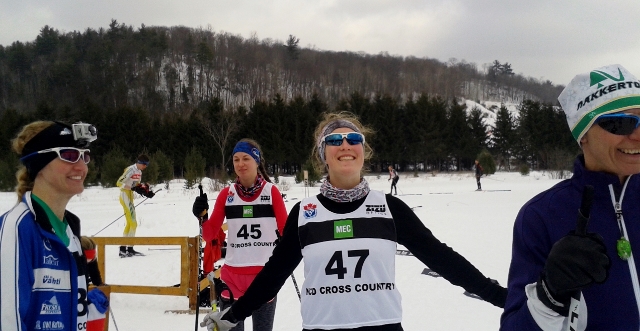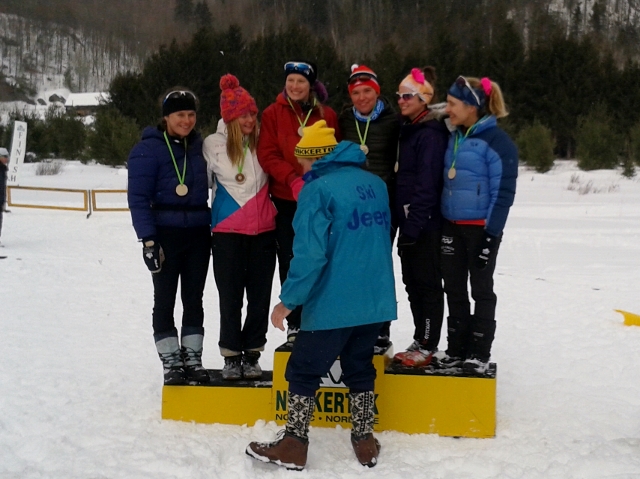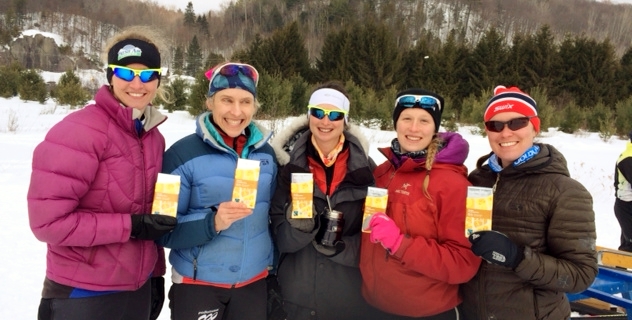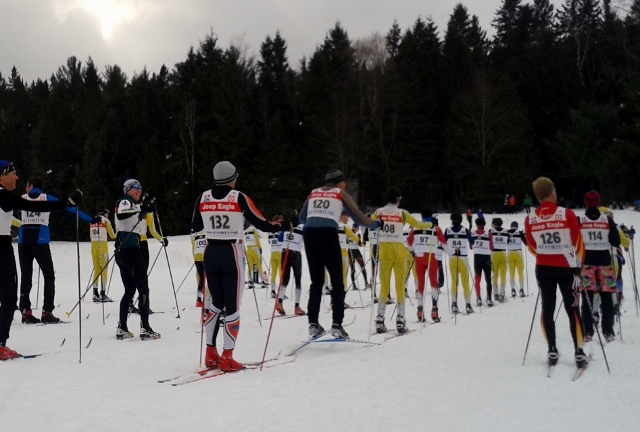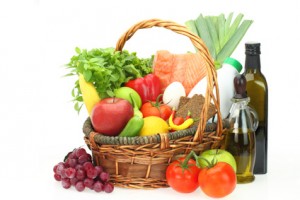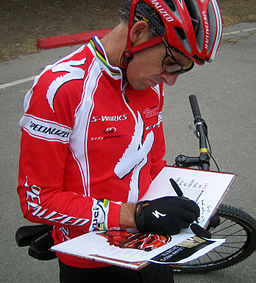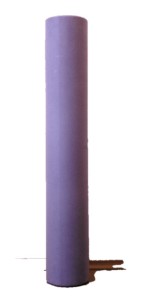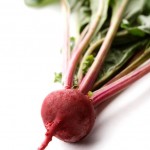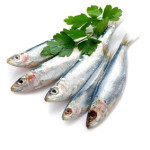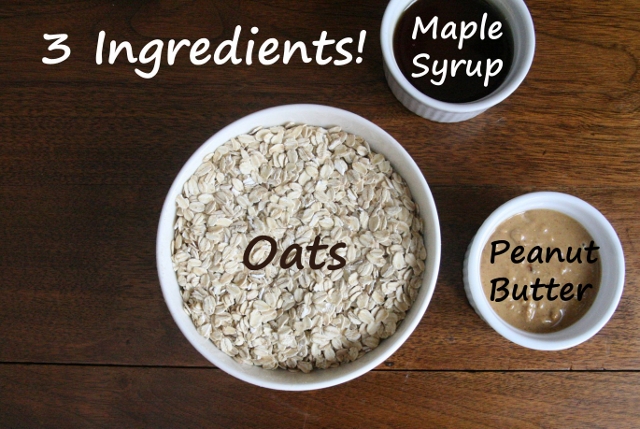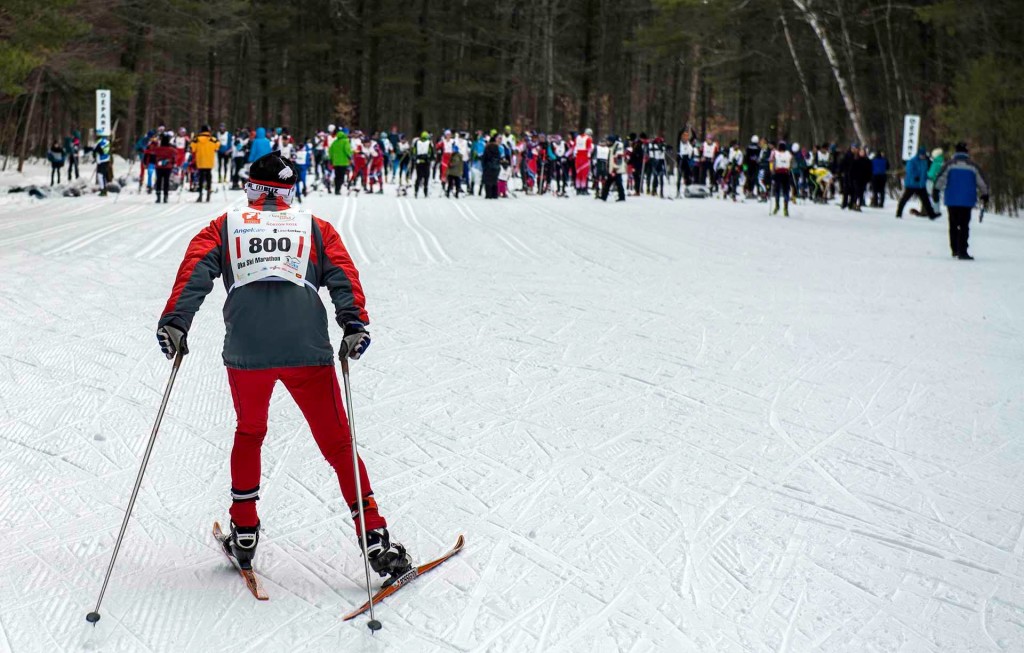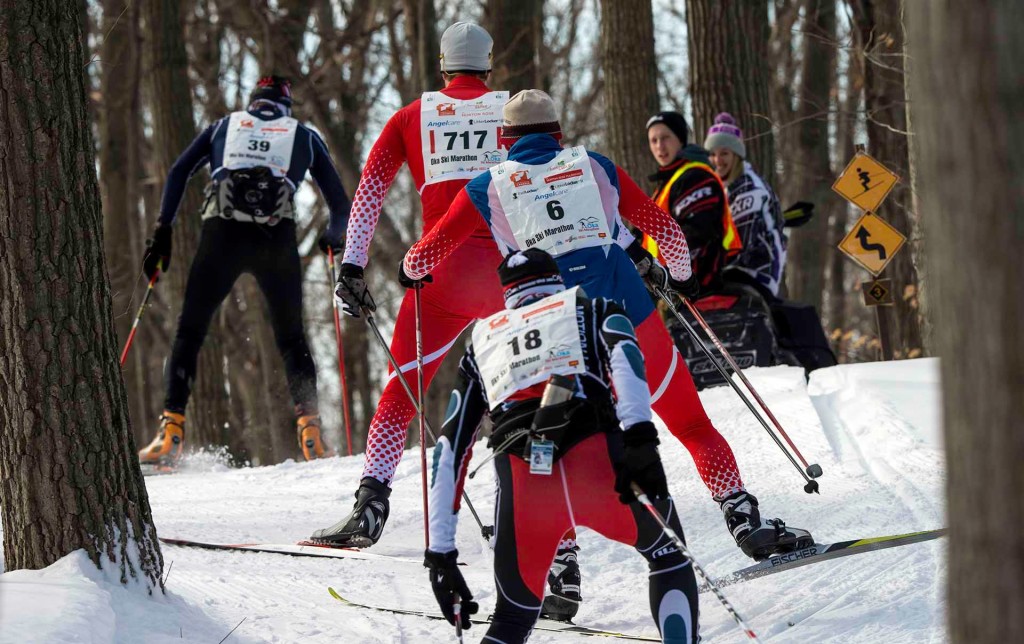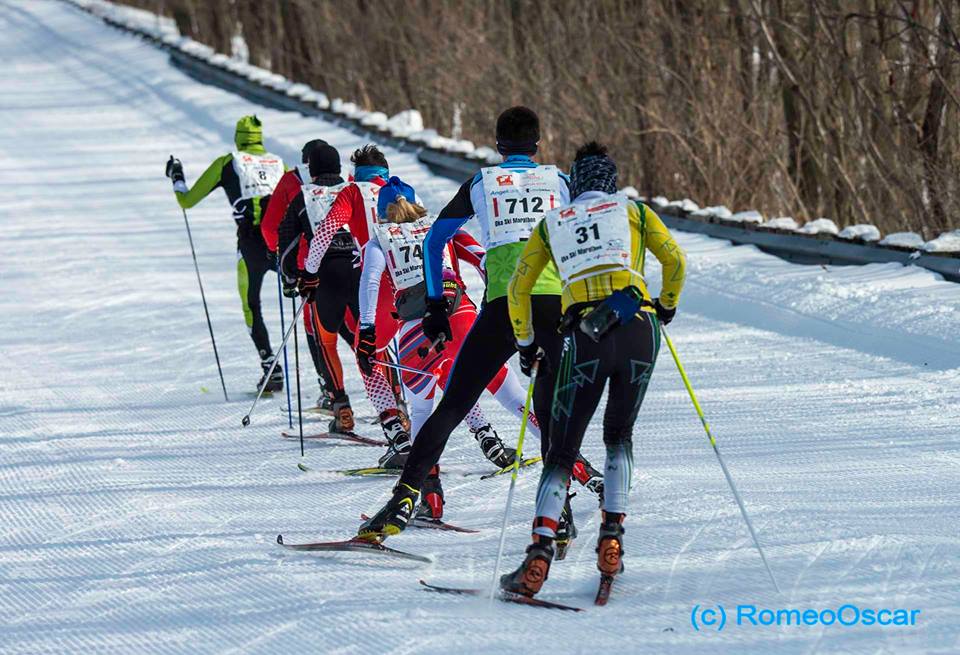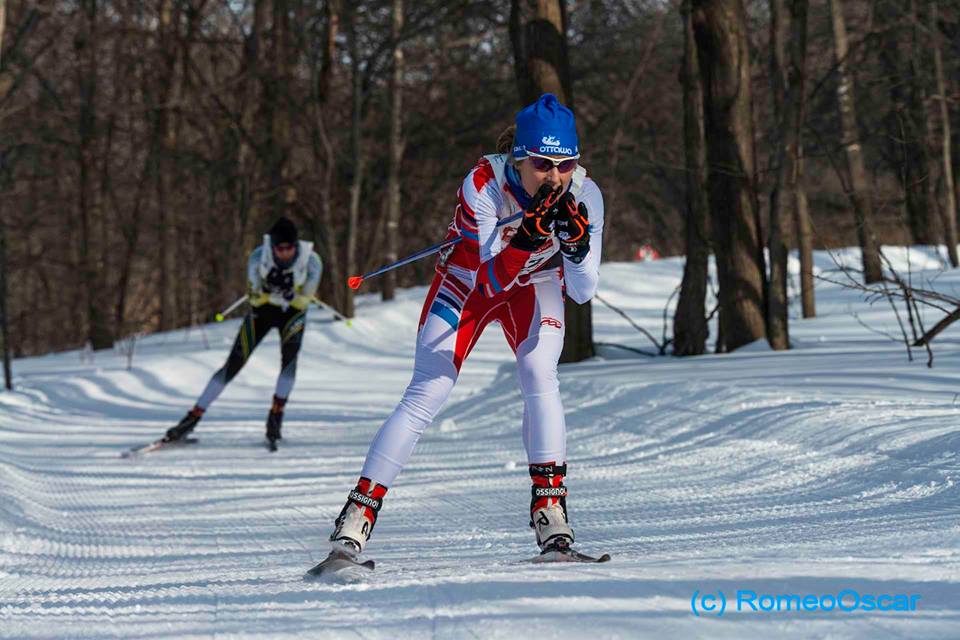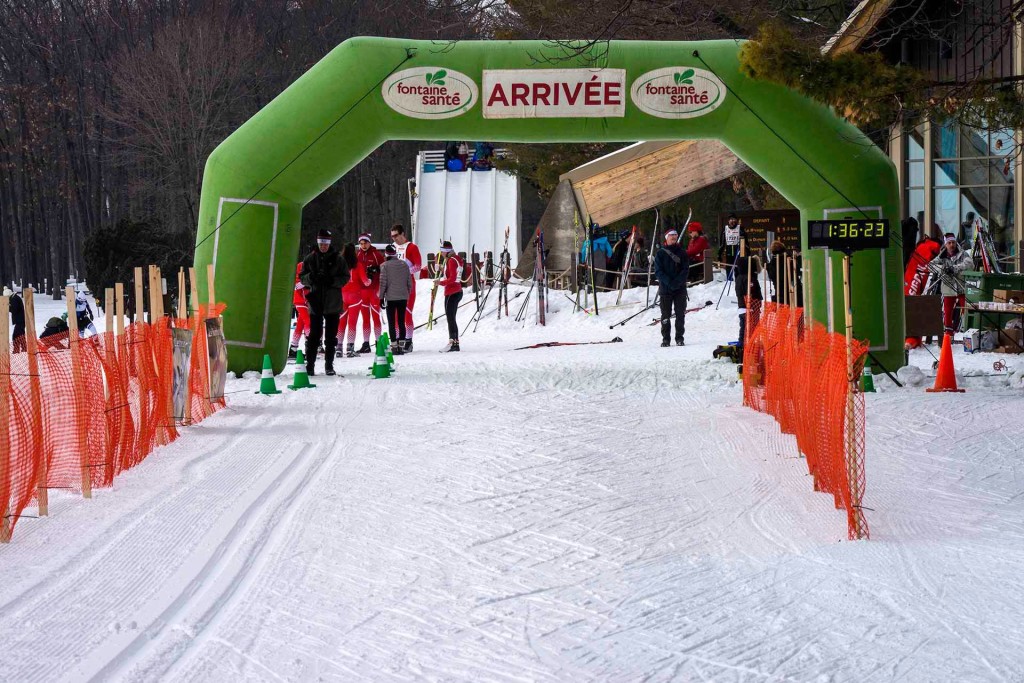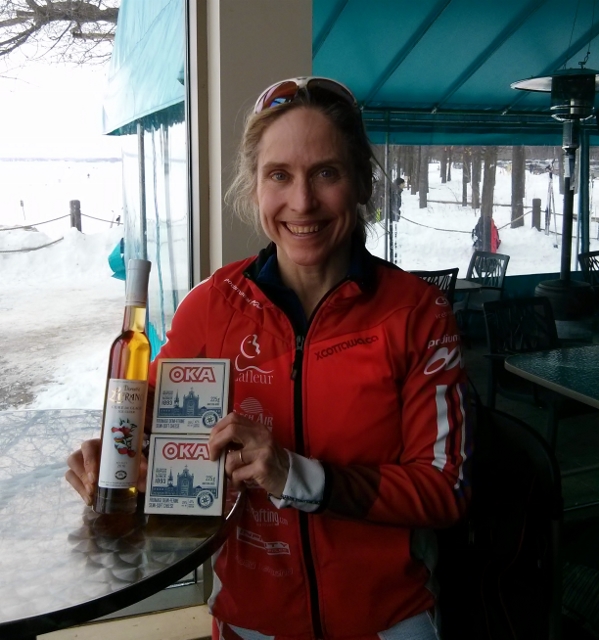What would it take to have more women as cross country ski coaches and wax technicians?
This is a question the racing committee at Nakkertok Nordic Ski Club wanted to address. Why? Nakkertok has a successful program, but women are significantly underrepresented in key areas of program delivery. Currently women represent only 5% of the waxing team and 16% of the coaching team. This is likely similar at other Canadian ski clubs. Of course, women are active volunteers in other areas, but we know they have many qualities that would make them terrific coaches. What is keeping them away?
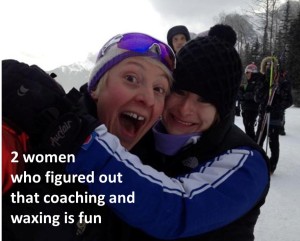 In 2014, Nakkertok held a women’s only workshop to build skills in waxing and ski technique. The response was overwhelmingly positive, with many requests to conduct another workshop. This year, we decided to do something bigger and better.
In 2014, Nakkertok held a women’s only workshop to build skills in waxing and ski technique. The response was overwhelmingly positive, with many requests to conduct another workshop. This year, we decided to do something bigger and better.
With support from the Canadian Association for the Advancement of Women and Sport and Physical Activity (CAAWS), we planned another workshop, featuring a larger leadership team, better food, and pre and post workshop surveys to gather data that would help shed light on how we could increase participation among women.
As one of the largest XC Ski clubs in Canada, Nakkertok was in a unique position to run this grassroots project, with a large number of potential participants and skilled instructors. Although a main goal was to increase women’s participation in non-traditional leadership roles, an additional goal was to provide a workshop model that other clubs could follow. Finally, through questionnaires and discussion, our project attempted to uncover the reasons influencing women’s participation in these male-dominated areas.
The Workshop
Twenty eight women attended a workshop held on January 24. The format was as follows:
- 1:00 – 1:30 – Meet and Greet
- 1:30 – 3:30 – Concurrent Ski Technique Session and Waxing Session (women switched sessions at 2:30)
- 3:30 – 4:30 – Forum/Social/Refreshments
Ski Preparation and Waxing
The waxing portion focused on the basics of glide and grip waxing, emphasizing that waxing doesn’t have to be complicated. We had four facilitators (Jen Tomlinson, Kieran Jones, Geoff Tomlinson, Sue Schlatter), and encouraged hands-on experience.
Ski Technique
Four facilitators (Sheila Kealey, Peter Lloyd, Suzanne Reid, and Sue Holloway) helped women with their classic or skate ski technique.
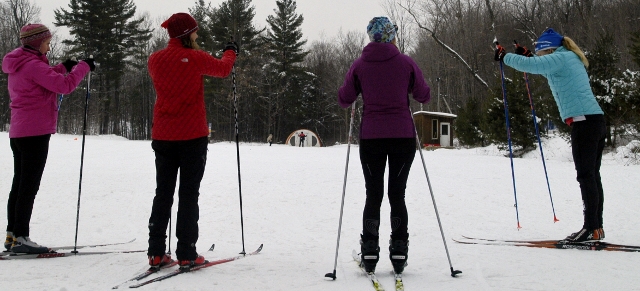
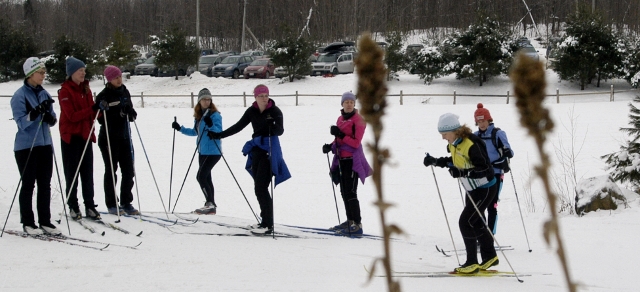
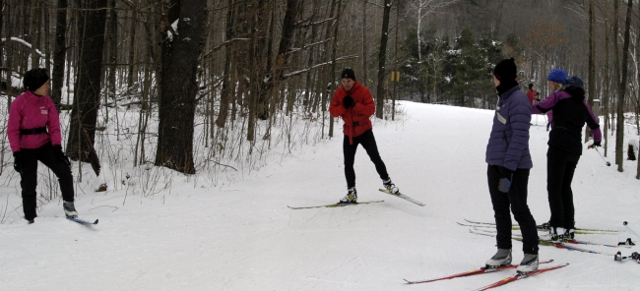 Social Component and Group Discussion
Social Component and Group Discussion
Time before and after the ski and wax sessions was devoted to socializing with good food, tea and coffee, and short presentations and discussions, which included
- The benefits of having more women engaged in traditional male roles within the xc ski community;
- The importance of having women mentors and role models, and
- Barriers and solutions to participation.
We also informed women about coaching courses and other opportunities at Nakkertok, Cross Country Canada.
Psychologist Kim Sogge joined our leadership team for the workshop discussion, and gave a short presentation on factors affecting women’s participation in sport and leadership roles. The presentation was motivational and inspiring, and sparked spirited discussions.
Workshop Feedback
The week following the workshop, women filled out an online survey to collect workshop feedback, and assess their skill and confidence. Comments about the workshop were extremely positive. Most participants would like to see follow-up workshops, and some thought a longer workshop might be of more value; some women suggested separating the waxing and technique component. Many commented that they would love to see clinics, workshops, or coaching courses offered at the same time that their children are in lessons/programs.
Most (96%) workshop attendees agreed or strongly agreed that the workshop helped them improve their skills and confidence on skis.
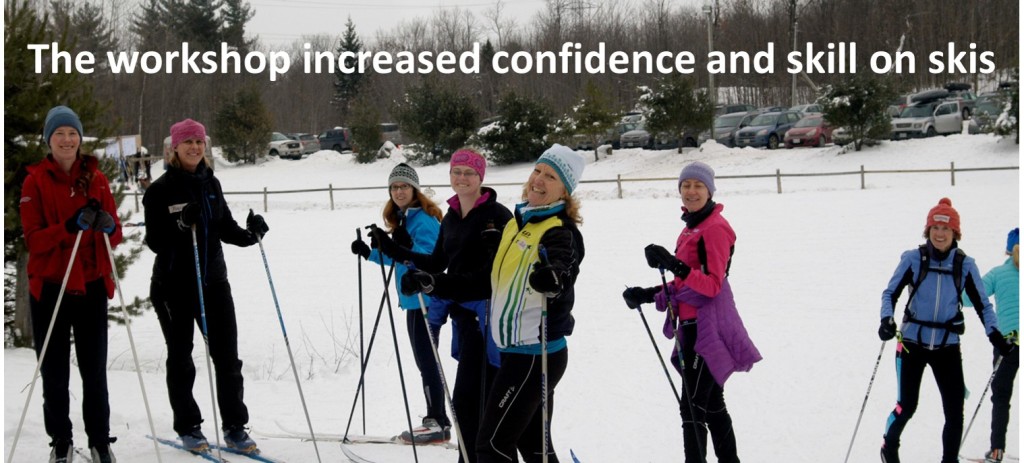 We asked workshop participants if the workshop helped them understand that they have the ability to learn enough to help out in coaching roles at Nakkertok. More than half of the women agreed (6% strongly agreed; 50% agreed); 23% had no opinion, and 1 woman disagreed.
We asked workshop participants if the workshop helped them understand that they have the ability to learn enough to help out in coaching roles at Nakkertok. More than half of the women agreed (6% strongly agreed; 50% agreed); 23% had no opinion, and 1 woman disagreed.
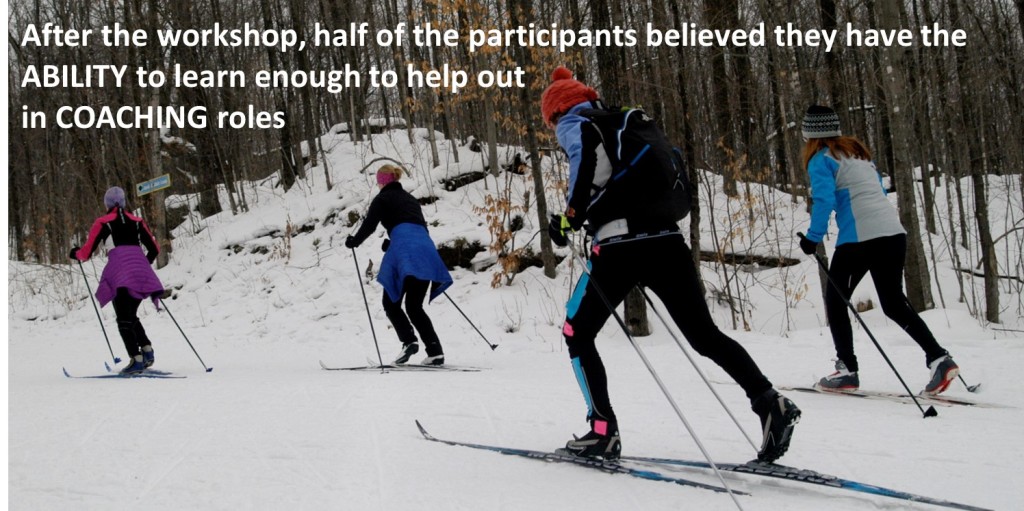 All attendees agreed that the workshop improved their confidence and skill in the waxroom (38% agreed, and 62% strongly agreed).
All attendees agreed that the workshop improved their confidence and skill in the waxroom (38% agreed, and 62% strongly agreed).
We asked if the workshop helped them understand that they have the ability to learn enough to help out in waxing roles at Nakkertok. All but one respondent agreed (strongly agreed =35%; agreed=62%) that the workshop helped in this regard.
Summary
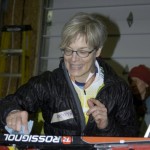 Facilitators and participants were unanimous in that this project was a huge success. The project achieved its goals of improving waxing and technique skills, informed women about the gender discrepancy in these areas, uncovered barriers to participation in traditionally male-dominated roles, and proposed ways to improve the situation.
Facilitators and participants were unanimous in that this project was a huge success. The project achieved its goals of improving waxing and technique skills, informed women about the gender discrepancy in these areas, uncovered barriers to participation in traditionally male-dominated roles, and proposed ways to improve the situation.
Lack of skill was identified as a major barrier to participating in the traditionally male-dominated areas of coaching and waxing, suggesting that programs to boost skill levels should be a high priority. But we need to ask, is boosting their skill level enough for women to consider contributing to coaching or waxing? Research shows that women tend to underestimate their abilities and performance relative to men, even when their performances are similar: for example, one study showed that women would only apply for a promotion when they met 100% of the qualifications, while men would apply when they met 50% of the qualifications. This information shows that confidence boosting and leadership skills should be integrated into workshops to ensure long-term success.
Time constraints were also identified as a major barrier. Clubs should make efforts to provide flexibility and more opportunities that might accommodate women’s schedules; those responsible for designing coaching courses might consider looking at the curriculum with this in mind.
Many thanks to CAAWS for the opportunity to run the workshop and learn more about women’s participation in male-dominated areas of cross country skiing.
Thanks to Jesse Williams for taking the photos. You can find more pictures of the workshop here.
You can find a longer report that includes full survey results and recommendations in our report Reducing Barriers for Women in XC Ski Community.
Share This:
